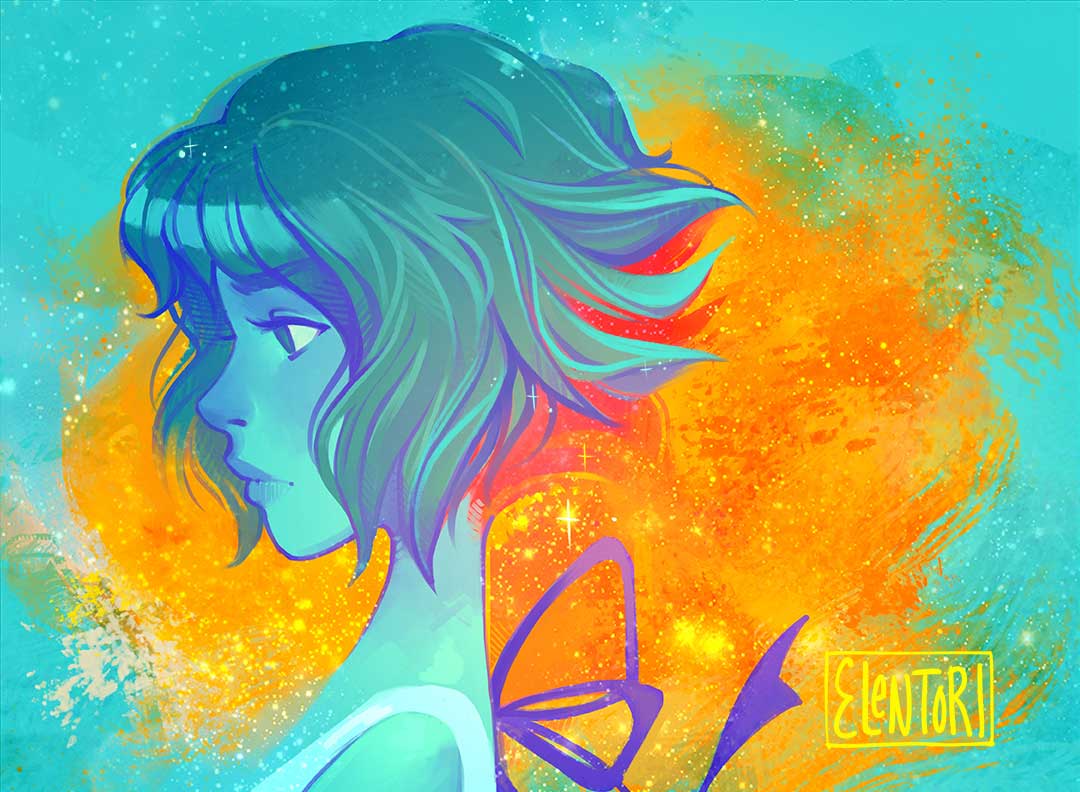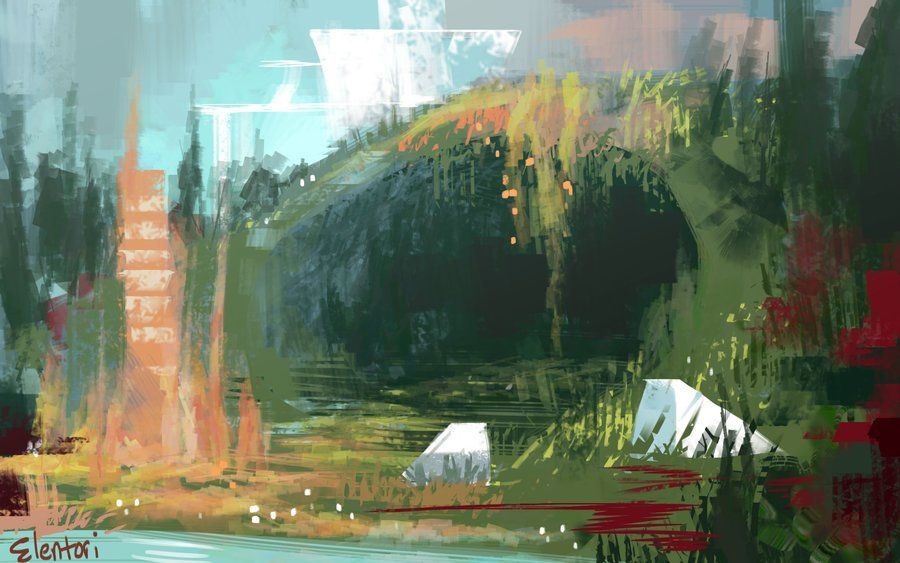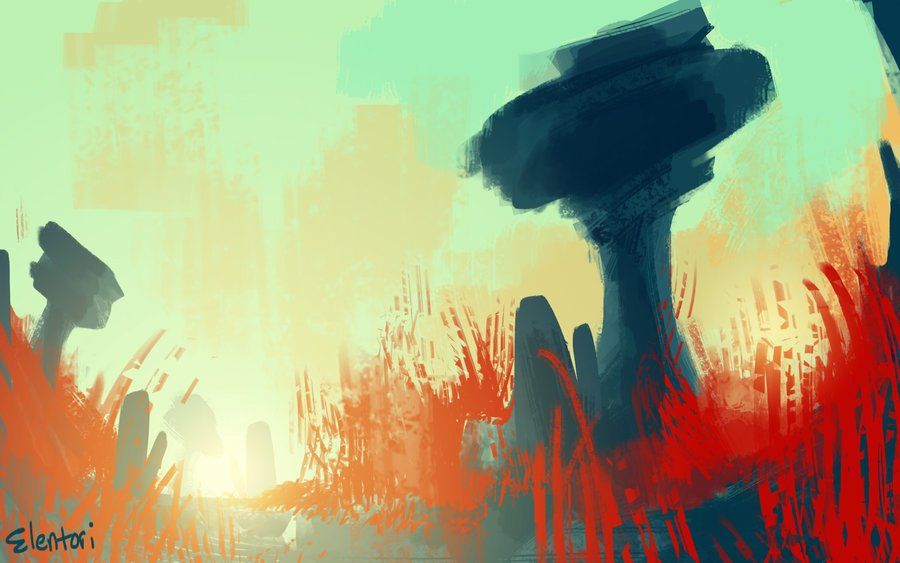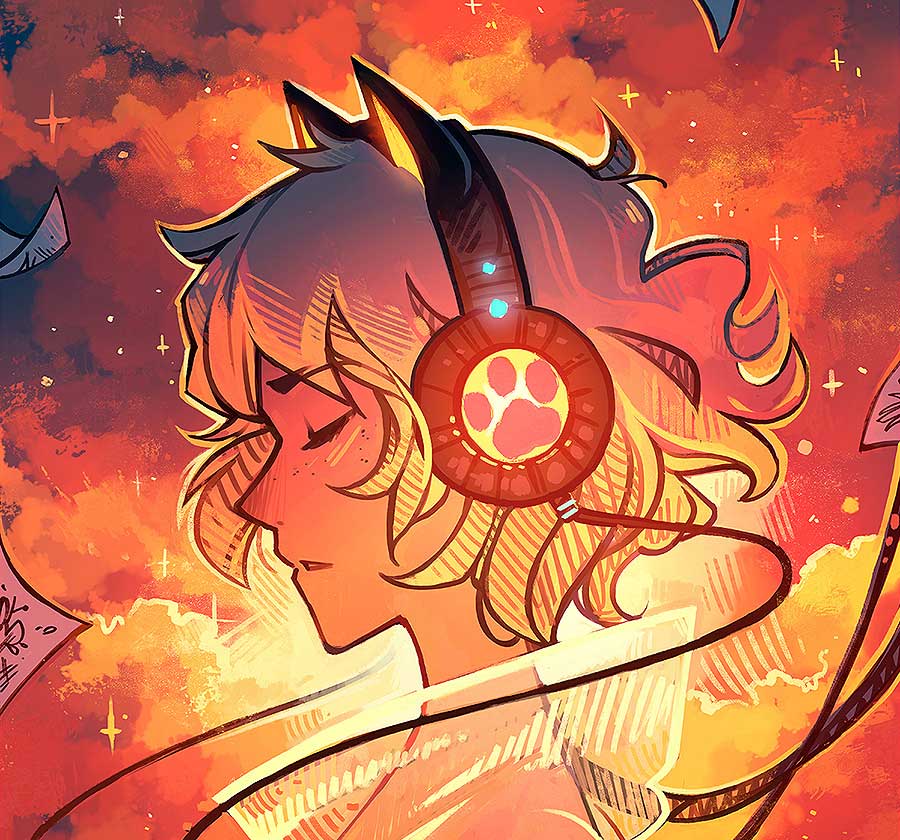Artist Spotlight: Elentori
February 25, 2020
Everyone’s work is deeply idiosyncratic: in our regular Spotlight segment we explore artists’ experiences and inspiration to understand what defines and inspires their unique styles.
Can you give us a brief background on yourself?
I was always the kid with the sketchbook, ever since I was old enough to hold a crayon, I've been drawing on every scrap of paper to come my way. It wasn't until college that I decided to pursue art as a career and started taking it seriously. My college instruction focused more on design and business. However, all my illustration work is self-taught. I’ve done many things over the years, I currently work as a concept artist for an indie game company called Multivarious. I also do book illustrations and have done some work for Disney in the past.

What kind of influence does your location have on your career?
My career is currently working as a concept artist, and that’s an interesting job to have for someone stuck in Ohio! My location has led me to meet many great people interested in growing the gaming industry here though, and I love it.
What is your process like when combining traditional and digital methods?
I enjoy sketching in pencil and always have at least two sketchbooks on me at all times. Sometimes I scan in those pencil sketches and color over them in photoshop, it’s the texture you get from traditional art that I’m constantly trying to replicate with my digital art.
Could you pick one piece of art that has made a lasting influence on you, and if so why?
This is the first piece
I did that started gaining attention online, it was also one of my most extreme color experiments at the time. I would consider this piece the start of what I would call my current style, the strong light and hatching and vibrant colors. In fact, my more recent piece was a nod to the older piece, but with much stronger hatching and more of my current cartoon style.
What skills or techniques are you working to try improve at the moment?
At the moment, I’m working on pushing my colors and texture even further. I would also like to dive into more semi-realism with my work. I work mainly with cartoons so there hasn’t been a need for it yet, but it’s something I’d like to learn.
Can you give our readers a tip or trick you have come across that has made your work a lot easier?
Overlay/screen/soft light layers for color! Working with color is something you become more comfortable with the more you draw, but one of the beautiful things with digital art is the ability to completely change color, or add in color or do whatever you want with just a few adjustment layers. Learning how to continually mess with color as you’re working on a piece helps take off some of the pressure from needing to choose the right colors off the bat.
How can people who are interested in discovering more of your work find it?
My work can also be found on Deviantart
and Facebook.
Scriba is a revolutionary digital stylus that is ergonomically designed to comfortably fit your hand and uses unique Squeeze-Motion technology. Order here.
Articles

In the period since COVID forced many of us back home and out of the office, remote work has become the new norm for many. The flexibility of working from home, especially for those with small children, is very compelling, but making a productive workspace is more than setting up a desk in the spare room. More people are seeking to create functional and comfortable workspaces in their homes, however, it can be difficult to strike the right balance between a professional office space and a cosy home environment. Here are some tips for designing a home workspace that meets both of these needs: Dedicate a specific area for work Designating a specific area for work is essential for separating work from leisure time. This could be a separate room or just a corner of a room. It is important to make sure that the workspace is free from distractions and clutter, as this will help you stay focused and productive. Choose the right furniture Ergonomic furniture is key to a comfortable and productive workspace. Invest in a comfortable chair, a desk that is the right height, and a good-quality mouse and keyboard. If you are prone to back pain, consider a standing desk. Add personal touches Just because your workspace should be functional, doesn’t mean it can’t be personal. Add photos, plants, and other personal items to make the space feel like your own. This will help create a sense of comfort and make you feel at home in your workspace. Good lighting Good lighting is essential for a comfortable workspace. If possible, place your desk near a window for natural light. If not, invest in a high-quality desk lamp to provide bright, even light. Keep it organised An organised workspace will help you stay productive and focused. Use desk organisers, filing cabinets, and other tools to keep your work area free from clutter. A clean and organised workspace will also help you start each day with a clear mind. Consider your work style Think about the type of work you do and how you like to work. If you prefer a minimalist workspace, opt for a simple desk and a few basic supplies. If you need space for multiple screens and other technology, make sure you have enough room to work comfortably. Take breaks It’s important to take breaks throughout the day to avoid burnout. Step away from your desk, go for a walk, or do some stretching exercises to clear your mind and recharge.












